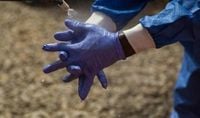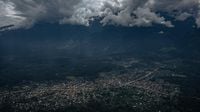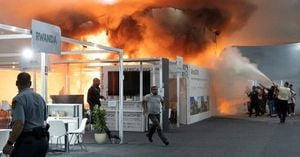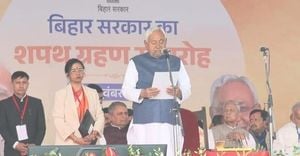In the heart of central Africa, the Democratic Republic of Congo (DRC) is once again grappling with a formidable foe: Ebola. The virus, infamous for its swift and deadly course, has re-emerged in the remote southern province of Kasai, sending shockwaves through communities and mobilizing a rapid—if challenged—international response. As of September 11, 2025, the number of suspected Ebola cases in Kasai has more than doubled in just a week, rising from 28 to 68, with 20 laboratory-confirmed cases and a death toll that stands at 16, according to the Africa Centers for Disease Control and Prevention (Africa CDC).
The outbreak’s epicenter is Bulape, a small town where, on August 20, a 34-year-old pregnant woman was admitted to the local hospital suffering from sudden fever, bloody vomiting, and profound weakness. Despite supportive care, she died five days later. Laboratory testing confirmed Ebola infection. In the days that followed, the virus spread rapidly, and by the time the government officially declared the outbreak on September 4, there were already 28 suspected or confirmed cases and 15 deaths, including four healthcare workers, as reported by STAT News.
“It was two [districts], now it is four,” Dr. Ngashi Ngongo, principal advisor with Africa CDC, stated during an online briefing. The outbreak, which initially affected Bulape and Mweka health zones, has now expanded to Mushenge and Dekese. The risk of cross-border transmission is rising, particularly with neighboring Angola within reach, prompting urgent calls for scaled-up surveillance and infection control measures.
Containment efforts have been hampered not only by the virus’s stealth and speed but also by the region’s geography and infrastructure—or lack thereof. Kasai is notoriously difficult to access: poor road conditions, no cargo airport, and limited electricity all complicate the delivery of medical supplies and the movement of response teams. According to The Economist, transporting medicines from Kinshasa, the DRC’s capital, to Kasai can take nearly three days—a delay that could prove fatal in a crisis where hours matter.
Despite these obstacles, local and international agencies have rallied quickly. The World Health Organization (WHO) and Doctors Without Borders (MSF) joined forces with the DRC Ministry of Health, establishing an Ebola treatment center at the General Referral Hospital in Bulape. “Our teams began supporting the General Referral Hospital in Bulape almost immediately,” said Brice de la Vigne, MSF emergency coordinator. “We helped reinforce triage protocols, supplied essential medicines and personal protective equipment, and conducted training in infection prevention and control, and symptomatic care.” The MSF and WHO treatment center began admitting patients on September 9, and MSF staff have also visited nearby clinics to strengthen infection prevention and control protocols.
As of September 11, a dozen MSF staff are on the ground in Bulape, with more personnel and tons of medical material en route. The WHO has confirmed that 2,000 doses of the Ebola vaccine are available in DRC, with additional shipments expected soon. So far, 68 frontline healthcare workers have been vaccinated, and 100 doses of the monoclonal antibody MAb144 (ansuvimab-zykl, Ebanga) have been transported to Bulape to treat severe cases.
Yet, the challenges are not only logistical. The DRC’s health system is stretched thin, and the outbreak’s timing is particularly fraught. In previous years, international support—especially from the United States—played a pivotal role in outbreak containment. But as STAT News points out, the erosion of global health infrastructure in recent years has left countries like DRC more vulnerable. The U.S. Agency for International Development, once a linchpin of global health funding, has been dismantled, and the U.S. is in the process of withdrawing from WHO, a move that could have far-reaching consequences for outbreak response capabilities worldwide.
“This outbreak is a reminder of the threat posed by Ebola in DRC,” said Hilde De Clerck, MSF infectious diseases specialist. “Fortunately, progress in recent years has led to improved treatments, but this hemorrhagic fever can still be fatal for most infected patients without timely and appropriate care. Ensuring access to both treatment and vaccines is essential.”
Surveillance remains a weak point. Early in the outbreak, only 19% of 157 identified contacts were being monitored, raising concerns about undetected chains of transmission. As of September 11, responders have identified 401 case contacts, with 398 under follow-up. The virus’s ability to spread at funerals—where traditional practices involve washing and touching the deceased—has amplified the risk, especially before the outbreak was officially recognized.
Genomic sequencing has played a crucial role in understanding the outbreak’s origins. Within 24 hours of the outbreak declaration, scientists released the virus’s sequence, revealing it to be 99.5% similar to the strain first identified in Yambuku, Mongala province, in 1976. However, it is distinct from the viruses responsible for previous Kasai outbreaks in 2007 and 2009, suggesting a new zoonotic spillover event rather than lingering transmission. This rapid, transparent sharing of data is a testament to the country’s growing technical capacity—a silver lining built on years of international collaboration.
For local residents, the outbreak has brought fear and uncertainty. Public movements have been curtailed, and checkpoints established at the main entrances to Tshikapa, the provincial capital. Some villagers have fled, only to return due to limited resources and the harsh realities of survival. “However, given the limited resources, survival is not guaranteed,” Emmanuel Kalonji, a resident of Tshikapa, told The Associated Press. In Boulapé, Ethienne Makashi, the local official in charge of water, hygiene, and sanitation, expressed cautious optimism: “We do have one case showing good progress, which gives a glimmer of hope for those receiving care.”
The DRC’s experience with Ebola is extensive—this marks the 16th outbreak since the virus was discovered there in 1976, and the seventh in Kasai province alone. A previous outbreak in eastern Congo between 2018 and 2020 killed more than 1,000 people, while the 2014-2016 West Africa outbreak, which began in a rural village, ultimately resulted in over 28,000 cases and 11,000 deaths worldwide.
As the world watches Kasai, the stakes are high—not only for the DRC, but for global public health. The risk of wider spread may be low for now, but pathogens know no borders. The real test lies in whether international solidarity and robust health systems can rise to meet the challenge, or whether the flames in Kasai will serve as a warning of vulnerabilities yet to come.






